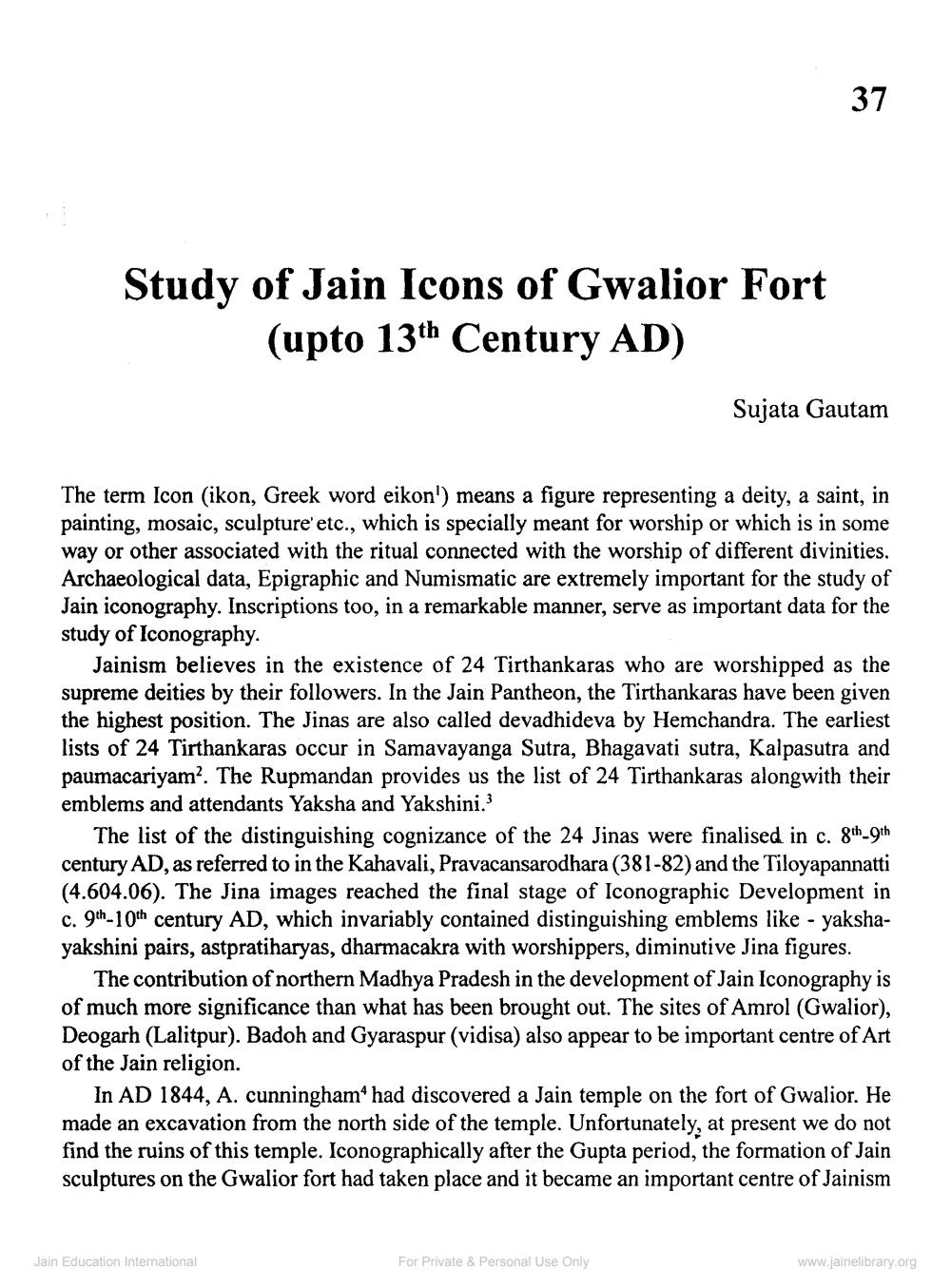________________
Study of Jain Icons of Gwalior Fort (upto 13th Century AD)
37
The term Icon (ikon, Greek word eikon') means a figure representing a deity, a saint, in painting, mosaic, sculpture' etc., which is specially meant for worship or which is in some way or other associated with the ritual connected with the worship of different divinities. Archaeological data, Epigraphic and Numismatic are extremely important for the study of Jain iconography. Inscriptions too, in a remarkable manner, serve as important data for the study of Iconography.
Sujata Gautam
Jainism believes in the existence of 24 Tirthankaras who are worshipped as the supreme deities by their followers. In the Jain Pantheon, the Tirthankaras have been given the highest position. The Jinas are also called devadhideva by Hemchandra. The earliest lists of 24 Tirthankaras occur in Samavayanga Sutra, Bhagavati sutra, Kalpasutra and paumacariyam2. The Rupmandan provides us the list of 24 Tirthankaras alongwith their emblems and attendants Yaksha and Yakshini.3
The list of the distinguishing cognizance of the 24 Jinas were finalised in c. 8th-9th century AD, as referred to in the Kahavali, Pravacansarodhara (381-82) and the Tiloyapannatti (4.604.06). The Jina images reached the final stage of Iconographic Development in c. 9th-10th century AD, which invariably contained distinguishing emblems like - yakshayakshini pairs, astpratiharyas, dharmacakra with worshippers, diminutive Jina figures.
The contribution of northern Madhya Pradesh in the development of Jain Iconography is of much more significance than what has been brought out. The sites of Amrol (Gwalior), Deogarh (Lalitpur). Badoh and Gyaraspur (vidisa) also appear to be important centre of Art of the Jain religion.
Jain Education International
In AD 1844, A. cunningham' had discovered a Jain temple on the fort of Gwalior. He made an excavation from the north side of the temple. Unfortunately, at present we do not find the ruins of this temple. Iconographically after the Gupta period, the formation of Jain sculptures on the Gwalior fort had taken place and it became an important centre of Jainism
For Private & Personal Use Only
www.jainelibrary.org




